
ADHD: Symptoms, Causes and Natural Support Strategies
ADHD (Attention Deficit Hyperactivity Disorder) is one of the fastest growing health conditions in our world. While it mostly impacts children and teenagers, adults are also dealing with this condition. In this article, I will go over the most common symptoms and root cause factors involved with ADHD and natural support strategies to improve brain health.
The U.S. Centers for Disease Control and Prevention recently surveyed 73,000 children and found one in 10 has ADHD. This is a 22% increase since 2003. Approximately 11% of children 4-17 years of age (6.4 million) have been diagnosed with ADHD as of 2011 (1).
Boys (13.2%) were more likely than girls (5.6%) to have ever been diagnosed with ADHD. The average age of ADHD diagnosis was 7 years of age, but children reported by their parents as having more severe ADHD were diagnosed earlier. Prevalence of ADHD diagnosis varied substantially by state, from a low of 5.6% in Nevada to a high of 18.7% in Kentucky.

ADHD and Delayed Development:
Studies using brain imaging have shown that children with ADHD have a delayed brain maturation by about 3 years (2). The delay is most pronounced in brain regions involved in thinking, attention, focus and planning.
Some of the most significant maturation delays are in the outermost layer of the brain, the cortex and in particular the frontal lobe of the cortex (3, 4). The corpus colosum, which is key for proper communications between the 2 hemispheres of the brain is also shown to have an abnormal growth pattern in children with ADHD, sensory processing disorders and dyslexia (5, 6, 7).
Neurotransmitter Regulation and ADHD
Molecular genetic studies have identified several genes that may mediate susceptibility to attention deficit hyperactivity disorder (ADHD). A consensus of the literature suggests that when there is a dysfunction in the “brain reward cascade,” especially in the dopamine system, causing a low or hypo-dopaminergic trait, the brain may require dopamine for individuals to avoid unpleasant feelings (8, 9).
This high-risk genetic trait leads to multiple drug-seeking behaviors, because the drugs activate release of dopamine, which can diminish abnormal cravings. Moreover, this genetic trait is due in part to a form of a gene (DRD2 A1 allele) that prevents the expression of the normal laying down of dopamine receptors in brain reward sites (10, 11, 12).
Other studies have shown issues with the ability of the enzyme dopamine beta hydroxylase which catalyzes dopamine into norepinephrine and the norepinephrine transporter enzyme which is involved in the reuptake of norepinphrine into the synaptic terminals (13, 14).
Additional research has looked at dysfunctions in the serotonin and GABA pathways and the relationship to ADHD (15, 16). Serotonin and GABA are both necessary for calming the brain and inhibiting distracting stimuli. It is obvious from this research that genetic polymorphysisms and developmental challenges with neurotransmitter function are critical factors in ADHD.
ADHD and Birthing Medications:
Children who were exposed to anesthesic medications in their first 2 years of life are at a significantly greater risk of developing ADHD (17, 18). One study showed that children exposed to anesthesia in the first 3 years of life had twice the risk of developing ADHD than children who had not been exposed (19).
This is one of the complications of mothers choosing anesthetic medications and epidurals during their birth process. Additionally, the medications such as pitocin (oxytocin) used for birth inductions are also linked with higher rates of ADHD (20)

ADHD and Stimulant Medication:
Individuals with ADHD are most often prescribed stimulant medications such as ritalin, dexedrine and adderall. These medications increase dopamine and norepinephrine levels in the brain. These neurotransmitters are critical for goal setting, concentration and focus (21, 22).
Common side effects include restlessness, dizziness, insomnia, headache, dryness of the mouth, gastrointestinal complaints and weight loss (23). Ritalin and Adderall are classified as “Schedule II” drugs (along with cocaine) by the Drug Enforcement Agency to indicate drugs with a high potential for abuse (24).
ADHD and the Microbiome:
There has been a tremendous amount of research linking the gut microbiome and neurological health. Research has indicated that low levels of healthy Lactobacillus and bifidobacterium are linked with increased brain excitability and neurological inflammation (25).
A 2013 study evaluated 742,939 children and demonstrated that those children with ADHD had a dramatic increased prevalence of constipation almost threefold higher than those without ADHD. Fecal incontinence was sixfold higher in the ADHD group, and visits to the doctor because of bowel issues was also dramatically increased in kids with ADHD.
Gut motility is a critical factor in the development and maintenance of a healthy microbiome. Children with ADHD most often have slow motility and a proliferation of microbes that secrete neurotoxic compounds such as lipopolysaccharides (LPS) (26).
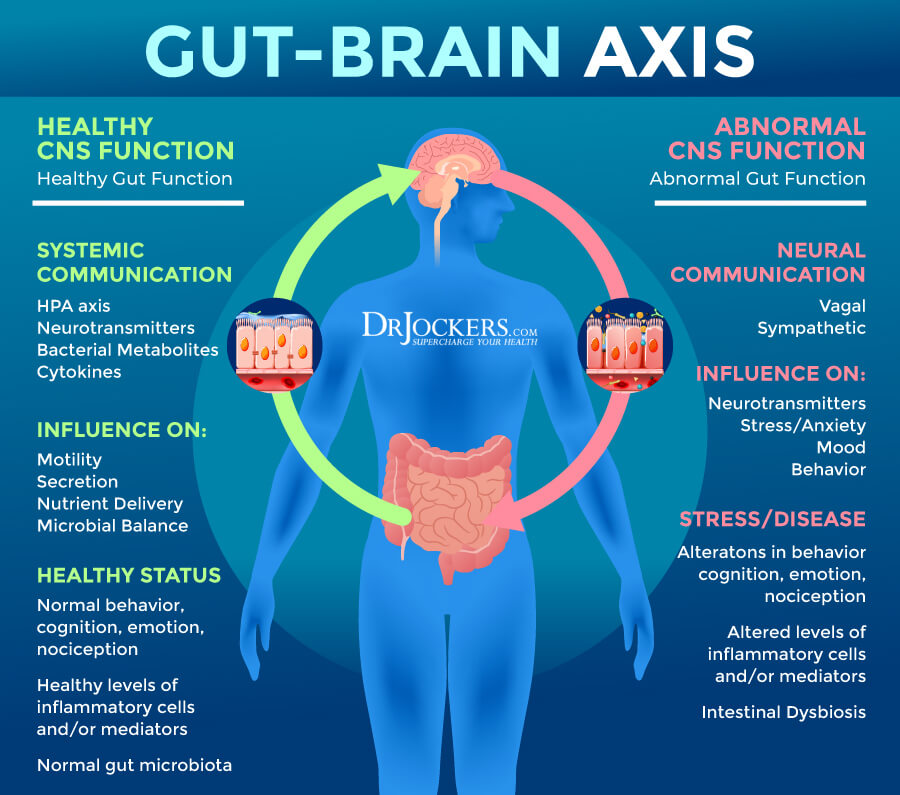
Additives and Chemical Perservatives:
ADHD is commonly seen associated with an inflammatory based diet and toxic food additives, dyes and preservatives. These food industry based chemicals are mild-moderately neurotoxic. They also have a strong synergistic affect when combined with sugars such as fructose (27, 28).
A 2007 Lancet study concluded that food dyes along with the preservative sodium benzoate (found in many soft drinks, fruit juices, & salad dressings) cause many children to become significantly more hyperactive and distractible. This study also found that food additives and dyes can do as much damage to children’s brains as lead in gasoline (29).
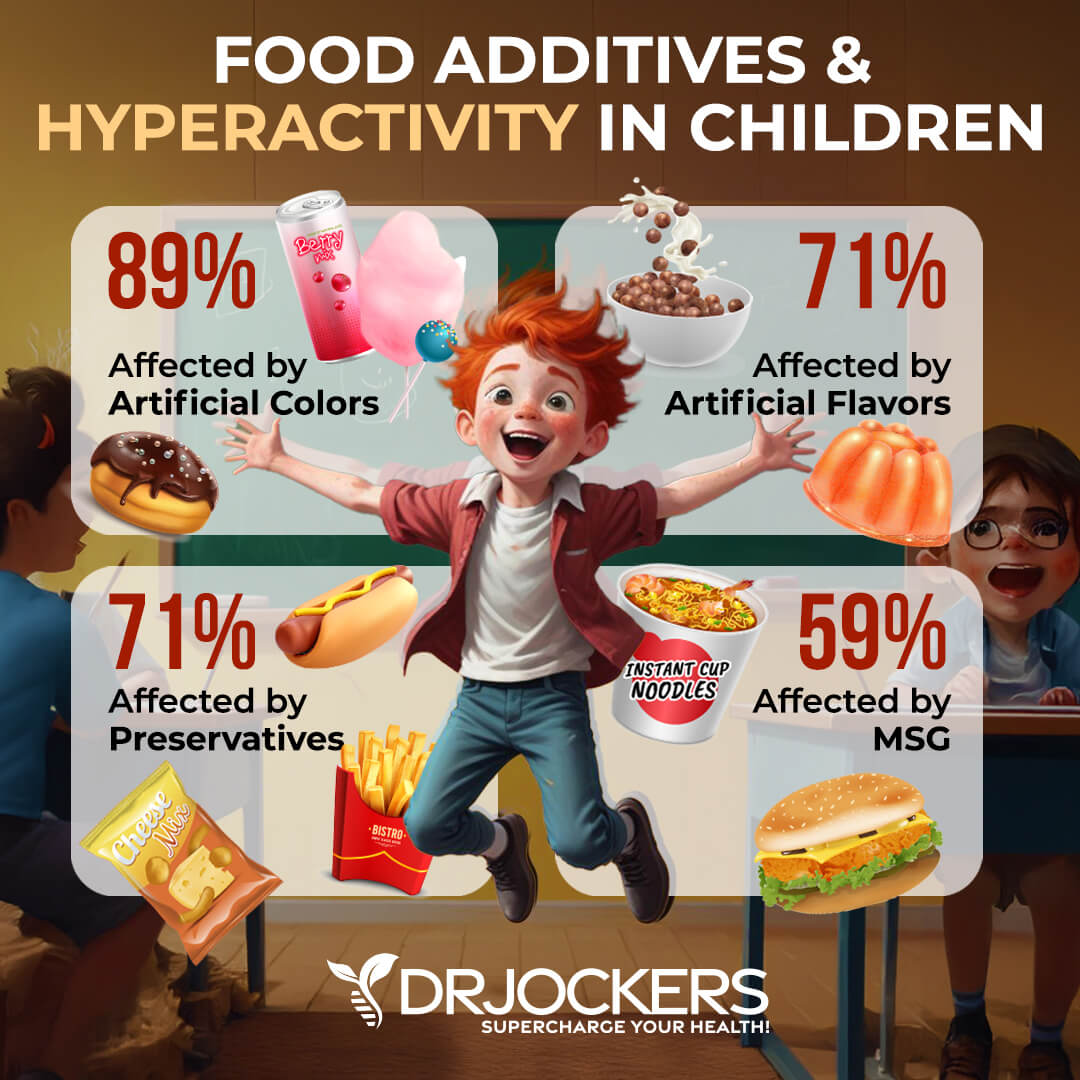
Gluten Sensitivity and ADHD:
Gluten is the common protein molecule found in wheat, barley, rye, kamut and spelt. Gluten is a sticky storage protein that binds to the small intestinal wall where it often causes digestive and immune system disorders.
There is extensive research about gluten sensitivity and disorders in every part of the neurological system. Gluten is a significant trigger in neurodevelopmental disorders such as ADHD (30, 31). If you have one of these issues it is critical to go 100% gluten-free.
Anti-Inflammatory Diet:
An anti-inflammatory nutrition plan that is low in carbohydrate and rich in healthy fats and antioxidants is critical to preventing and treating ADHD. The brain is primarily water, fat and cholesterol. These are all key building blocks for promoting healthy brain function and rebuilding a damaged brain.
The proper nutrition plan to beat ADHD is rich in phytonutrient dense vegetables, healthy fat and clean protein sources. Healthy fat sources such as coconut, avocados, olive oil & sprouted nuts and seeds must take a central role in the diet to promote healthy brain function.

Omega 3 Fatty Acids for ADHD:
There are many key nutrients that enhance the functioning of individuals with ADHD. Omega 3 fatty acids are perhaps the most effective nutrient in enhancing concentration and focus in ADHD individuals (32). Omega 3 fatty acids and in particular the long chain variety EPA and DHA are critical for stabilizing blood sugar, improving neurogenesis and neurotransmitter production (33, 34).
One study found that children with ADHD had significantly lower omega 3 fatty acid content than did normal controls and the most behaviorally challenged children had the lowest levels of omega 3 in their blood and tissue (35).
Key Nutrients for ADHD:
All of these trace minerals and B vitamins are necessary for proper neurotransmitter function. As explained above, ADHD and other learning disorders are related to neurotransmitter dysfunctions. Therefore, utilizing researched based nutrients to support neurotransmitter function seems appropriate and delivers proven results.
Magnesium: Studies have shown that magnesium supplementation benefits children with ADHD. One study showed that 50 children with ADHD and other behavioral issues had significant improvement with 6 months of 200 mg magnesium supplementation (36)

Vitamin B6: Has been studied along with magnesium to reduce hyperexciteability, aggressiveness and behavioral problems in school aged children (37, 38). Magnesium and B6 play a role in the development of all major neurotransmitters so it is no wonder they have such profound influence.
Folate: Individuals with an MTHFR gene polymorphism are more likely to be deficient in folate and are at greater risk for the development of ADHD (39). These individuals in particular need extra methyl-folate. Individuals supplementing with L-methyl-folate have shown significant improvement in ADHD symptoms (40).

Choline: This is a key precursor to the neurotransmitter acetylcholine, and it helps to regulate memory, focus and muscle control. Individuals with ADHD may have choline transporter defects (41) and can benefit greatly from extra choline intake (42).
Zinc: This is a key cofactor for dopamine synthesis which is key for healthy mood and concentration in ADHD. Low zinc status depresses serotonin and melatonin production which can affect behavior and sleep. Many people suffering with ADHD have low zinc status and supplementing with 30mg daily has shown to be significant for individuals with ADHD (43).

L-Carnitine: Plays a critical role in fatty acid metabolism and mitochondrial health. Has been shown to reduce hyperactivity and improve social behavior in people with ADHD (44).
Serine: Phosphatidylserine (PS) has been shown to increase dopamine levels. Research has shown that taking PS with omega 3 fatty acids improved ADHD scores significantly more than when taking just one of these alone. The researchers found it especially useful in the population of hyperactive-impulsive, emotionally and behaviorally dysregulated individuals.
L-Glutamine: This is the precursor for the neurotransmitter’s glutamate and GABA. Glutamate is excitatory while GABA is inhibitory and calming. Disruption in the glutamate, GABA balance may be present in individuals with ADHD (45). Additionally, L-glutamine helps improve gut integrity and reduces microbial related inflammation in the body that can affect brain function and induce ADHD.
Vitamin D3: Vitamin D3 plays an enormous role in the development and function of the brain. There is a strong association between low prenatal vitamin D levels in the mother and ADHD development in children (46). Individuals with ADHD are often found to have low vitamin D levels as well (47).
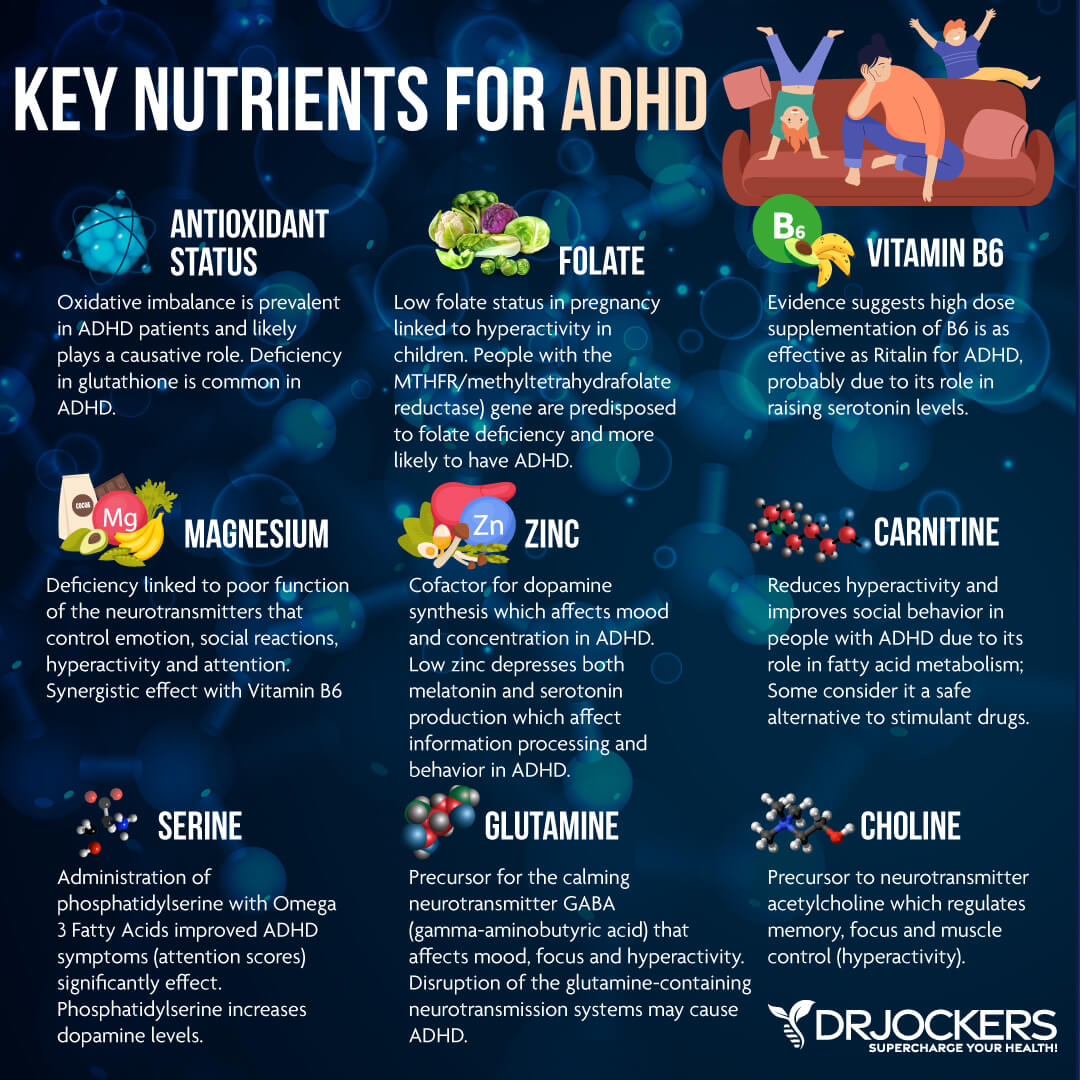
Glutathione and ADHD:
Individuals suffering with ADHD are under high levels of oxidative stress in their brain. Our main protective shield is the master antioxidant glutathione. Poor blood sugar control and high environmental toxin exposure are known to deplete glutathione levels and impair mitochondrial function (48).
A key pathway that maintains cellular glutathione levels and the ability of the cell to adapt to stress is called Keap1-Nrf2. When this pathway breaks down it causes increased levels of oxidative stress within the cell that leads to the glutathione depletion and mitochondrial dysfunction (49). Improving glutathione status in ADHD individuals improves hyperactivity and focus.

Chiropractic and ADHD:
Healthy movement patterns produce proprioception (movement information) which is a critical essential for healthy brain enhancing and neurodevelopmental patterns. Boosting proprioceptive input through good posture and spinal function is critical for healthy brain development.
Regular chiropractic care along with spinal hygiene exercises are essential lifestyle factors for healthy neurological function. This article explains the benefits and reviews specific case studies involving chiropractic care for children with ADHD and sensory learning disorders (50).

Healthy Movement Patterns:
Children, teenagers, & adults with ADHD symptoms do very well with a regular exercise program that incorporates core stability and functional balance training. Many hyperactive kids are naturally drawn to activities such as rebounding and jumping on a trampoline as well as balance sports such as skating, surfing and snowboarding.
All of these dynamic balance-based activities powerfully enhance proprioceptive input into the brain. Regular movement and daily exercise are also extremely beneficial for people with ADHD (51).

Natural Brain Health Support Strategies:
Here are the best action steps to get started with on your journey to improve brain health. It is important to note that these strategies are not at this time FDA approved to prevent, mitigate, treat or cure ADHD and should not be confused as such. You should always consult with your physician before stopping or changing medications or taking on new health strategies.
Additionally, you should be working with a functional health practitioner to help guide you through these strategies. This is not an exhaustive list and there are other natural therapeutic strategies that I and functional health practitioners will utilize to help individuals with ADHD and other learning disorders.
Anti-Inflammatory Nutrition Plan:
The key to preventing and reversing ADHD to begin with an anti-inflammatory diet and lifestyle. This includes lots of clean water and phytonutrient rich raw and lightly cooked vegetables.
Good fats such as avocados, olive oil, nuts/seeds and coconut products should be strongly encouraged. Healthy animal products such as grass-fed beef, bison, lamb, antelope, deer and free-range chicken, turkey and eggs should be used generously.
Consider Intermittent Fasting and a Ketogenic Diet
A ketogenic diet is a high fat, moderate protein and very low carbohydrate nutrition plan. This sort of diet helps stimulate the production of ketones which have therapeutic health benefits for the brain and reduce neurological inflammation and improve focus and concentration.
Intermittent fasting is a form of fasting cycles between not eating (fasting) and eating (feasting) over a period of time. The benefits of intermittent fasting benefits include cellular repair, autophagy, immune regulation, inflammation levels, and insulin sensitivity.
It also teaches our body to burn its own body fat for fuel and produce ketones. Going 16 hours between dinner and breakfast is one of the best ways to improve mitochondrial production. Your body improves energy efficiency by increasing and strengthening the mitochondria during periods of fasting. Consume your meals in a 8 hour window such as 11am–7pm or 10-6pm.
When you do this you enhance cellular healing and brain cell regeneration. One molecule that fasting increases is BDNF which enhances the growth and development of brain cells. To learn more about the benefits of intermittent fasting and best intermittent fasting practices, I recommend this article.
Getting into ketosis will enhance mitochondrial function in the brain. Learn more about following a ketogenic nutrition plan here and avoid exposure to herbicides and pesticides by choosing organic food as much as possible.

Include Magnesium & B Vitamin Rich Foods:
Magnesium helps to improve blood sugar signaling patterns and protects the blood-brain barrier. The best magnesium and B vitamin rich foods include dark green leafy veggies, avocados, grass-fed animal products, raw cacao and pumpkin seeds.
You can also do Epsom salt baths to support your magnesium levels. It would also be wise to supplement with a good magnesium and B complex supplement. Look for magnesium L-threonate which is the best form of magnesium for crossing the blood brain barrier.
When it comes to B vitamins, it is best to look for one with pre-activated forms such as methyl-folate, methyl-cobalamin (B12), Pyridoxal-5-Phosphate form of B6, and Riboflavin-5-phosphate form of vitamin B2. The methyl groups are in the active form and will be better utilized by the body.

Improve Your Sleep:
Prioritizing good sleep is just as important as reducing your stress levels. Develop a regular schedule going to bed and getting up at the same time every day to support your circadian rhythms.
Avoid electronics, sugar, caffeine, heavy foods, and stress close to the bed. Engage in relaxing activities, including stretching, relaxing baths, meditation, and prayer. Make sure that you have a supporting bed, pillow, and bedding, and sleep in a dark, calming room.

Boost BDNF Levels
Neurogenesis is the process our body goes through to create new neurons. The more activity a particular brain or neuronal cell is, the more neurogenesis takes place in the various pathways it fires into. Much like a tree with branches, these neurons go through a neurogenesis process called dendritic sprouting where they branch out to connect with other neurons.
The process of neurogenesis improves brain health and results in improved focus, concentration and sense of peace. The key compound the brain produces that stimulates neurogenesis is called brain derived neurotrophic growth factor (BDNF).
The key things that stimulate BDNF are a healthy diet that is nutrient rich and keeps blood sugar levels stable, ketone production from a ketogenic diet or intermittent fasting, good sleep, positive mental attitude and regular exercise. In addition, specific brain-based exercises that improve posture, balance and coordination help to stimulate BDNF levels as well.

Get Outside on a Regular Basis:
It is so important to get outside in nature. Go to a park every day and take a long walk and do lots of deep breathing. Nature is its own healer and if you find ways to get out in nature, you will see huge improvements in focus, concentration, learning and mood.
In our society we are surrounded by toxic electromagnetic frequency’s (EMF’s). These EMF’s increase stress within our body and alter neurotransmitter function.
By going outside daily and walking barefoot on grass, dirt or sand you absorb natural EMFs from the ground that balance your electrical rhythms. Follow the steps in this article here.

Supplement With Omega 3’s:
Omega 3 fatty acids may be the most important supplement for individuals with ADHD and learning disorders. Omega 3 fatty acids and in particular the long chain variety EPA and DHA are critical for stabilizing blood sugar, improving neurogenesis and neurotransmitter production. Consume grass-fed meat, grass-fed butter, wild-caught fish and spirulina to get it in your diet.
Plant based omega 3’s such as flax oil only contain the small chain omega 3 called ALA and do not have any DHA. It is very hard for our body to convert ALA into DHA so it is best to get a high-quality fish or krill oil that is rich in EPA and DHA. You want to find a brand that is molecularly distilled to take out any heavy metals and other unwanted contaminants.
Be sure to discuss with your physician before using as fish oils have a blood thinning affect and can be contraindicated if you are on blood thinning medications.

Improve Your Mitochondria:
The mitochondria are the energy powerhouses of every cell. When someone has a neurodevelopmental or learning disorder it is a clinical sign that they have dysfunctional activity going on in the mitochondria.
Support your mitochondria with clinical doses of CoQ10, L-carnitine, N-acetyl cysteine, creatine monohydrate, B vitamins, magnesium, alpha lipoic acid and D-ribose. You can find mitochondrial support supplements that have most if not all of these key nutrients.
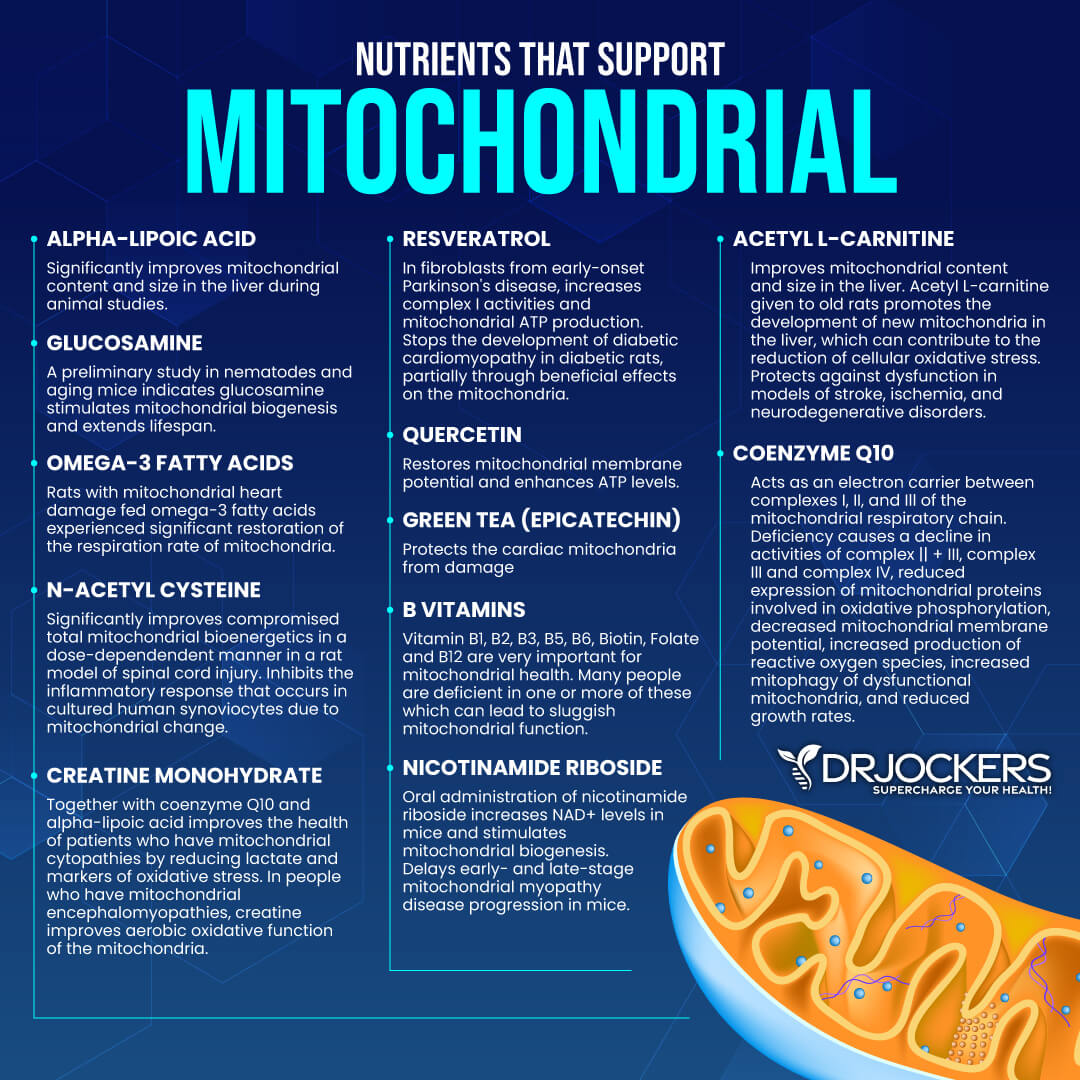
Optimize Your Vitamin D:
Low vitamin D3 is associated with neurological inflammation and trouble with concentration, focus and behavior. There are vitamin D receptors throughout the central nervous system and critical regions of the brain including the hippocampus.
Researchers have concluded that vitamin D activates and deactivates enzymes in the brain and cerebrospinal fluid that are involved in nerve growth, synaptic density and neurotransmitter synthesis (52).
Vitamin D3 is also shown to boost glutathione production in the neuronal cells protecting them from damage inflicted by oxidative stress. Vitamin D also helps to modulate the immune system to reduce inflammation throughout the body (53).

Support Gut Health
Your brain and gut are closely connected and supporting your gut is important for preventing and reducing brain degeneration. Make sure gut-friendly, anti-inflammatory, and nutrient-dense diet abundant in veggies, healthy fats, clean protein and probiotic-rich foods, such as sauerkraut, kimchi, and kefir.
Additionally, I recommend taking a daily probiotic supplement. Probiotics helps to optimize your gut health and improve your nutrient absorption while reducing gut related inflammation. When gut inflammation goes down it also reduces inflammatory mediators in the brain.
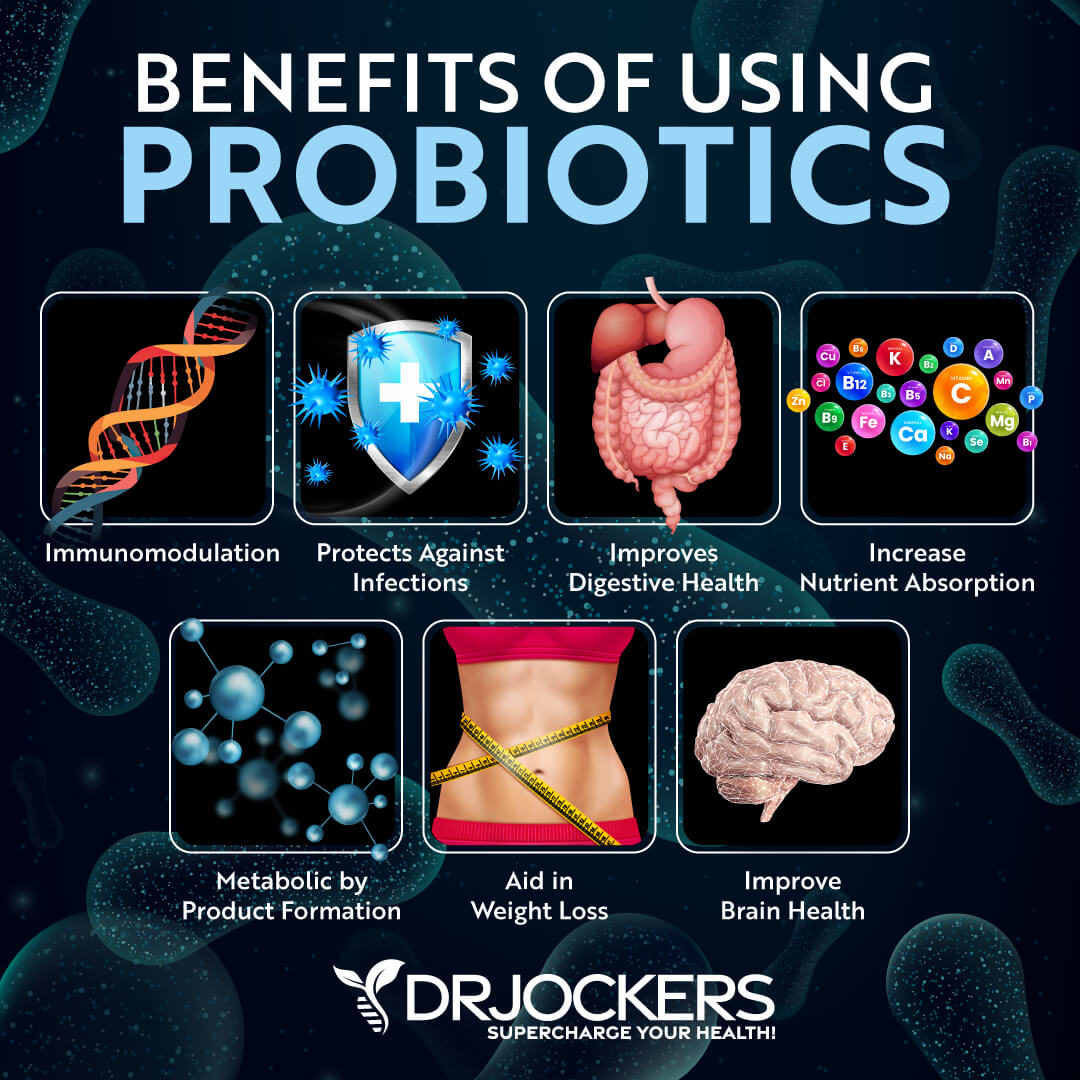
Reduce Toxin Exposure
Reducing your toxic exposure is critical for protecting your health from leaky brain. Buy organic food as much as possible. Stop using conventional beauty, body, and household products, and replace them with organic, natural, or homemade alternatives.
Use glass, stainless steel, wood, and bamboo products instead of plastic. Spend time in nature and breathe in the fresh air. Use a good indoor air filtration system. Make sure that you drink clean, toxin-free water by using a high-quality reverse osmosis system.

Support Detoxification Pathways
It is not enough to put good things into your body, you have to make sure that the bad things come out as well. Drink plenty of water to support detoxification through sweating and urine. Support your detoxification pathways to protect your body from brain inflammation.
I recommend using infrared saunas to promote detoxification through sweating. Try rebounding and dry skin brushing to support your lymphatic pathways. Support two major detoxifying organs, your kidneys and liver with herbs like milk thistle, parsley, dandelion and bioactive carbons which can penetrate and remove toxins from deep within the tissues and cells.

Inflammation Crushing Ebundle
The Inflammation Crushing Ebundle is designed to help you improve your brain, liver, immune system and discover the healing strategies, foods and recipes to burn fat, reduce inflammation and Thrive in Life!
As a doctor of natural medicine, I have spent the past 20 years studying the best healing strategies and worked with hundreds of coaching clients, helping them overcome chronic health conditions and optimize their overall health.
In our Inflammation Crushing Ebundle, I have put together my very best strategies to reduce inflammation and optimize your healing potential. Take a look at what you will get inside these valuable guides below!
Final Thoughts
ADHD is a serious issue that affects millions of people around the world. The symptoms of ADHD include trouble focusing, poor concentration, behavior problems and mood issues. There are many natural health strategies to support improved focus and brain health.
If you want to work with a functional health coach, I recommend this article with tips on how to find a great coach. On our website, we offer long-distance functional health coaching programs. For further support with your health goals, just reach out—our fantastic coaches are here to support your journey.
Sources For This Article Include:
1. CDC – New Data: Medication and Behavior Treatment Link Here
2. Shaw P, Eckstrand K, Sharp W, Blumenthal J, Lerch JP, Greenstein D, Clasen L, Evans A, Giedd J, Rapoport JL. Attention-deficit/hyperactivity disorder is characterized by a delay in cortical maturation. Proc Natl Acad Sci U S A. 2007 Dec 4;104(49):19649-54. PMID: 18024590
3. Shaw P, Gilliam M, Liverpool M, Weddle C, Malek M, Sharp W, Greenstein D, Evans A, Rapoport J, Giedd J. Cortical development in typically developing children with symptoms of hyperactivity and impulsivity: support for a dimensional view of attention deficit hyperactivity disorder. Am J Psychiatry. 2011 Feb;168(2):143-51. PMID: 21159727
4. Dirlikov B, Shiels Rosch K, Crocetti D, Denckla MB, Mahone EM, Mostofsky SH. Distinct frontal lobe morphology in girls and boys with ADHD. Neuroimage Clin. 2014 Dec 10;7:222-9. PMID: 25610784
5. Hynd GW, Semrud-Clikeman M, Lorys AR, Novey ES, Eliopulos D, Lyytinen H. Corpus callosum morphology in attention deficit-hyperactivity disorder: morphometric analysis of MRI. J Learn Disabil. 1991 Mar;24(3):141-6. PMID: 2026955
6. Hynd GW, Hall J, Novey ES, Eliopulos D, Black K, Gonzalez JJ, Edmonds JE, Riccio C, Cohen M. Dyslexia and corpus callosum morphology. Arch Neurol. 1995 Jan;52(1):32-8. PMID: 7826273
7. Demopoulos C, Arroyo MS, Dunn W, Strominger Z, Sherr EH, Marco E. Individuals With Agenesis of the Corpus Callosum Show Sensory Processing Differences as Measured by the Sensory Profile. Neuropsychology. 2014 Dec 22. PMID: 25528608
8. Blum K, Chen AL-C, Braverman ER, et al. Attention-deficit-hyperactivity disorder and reward deficiency syndrome. Neuropsychiatric Disease and Treatment. 2008;4(5):893-918.
9. Blum K, Braverman ER, Holder JM, Lubar JF, Monastra VJ, Miller D, Lubar JO, Chen TJ, Comings DE. Reward deficiency syndrome: a biogenetic model for the diagnosis and treatment of impulsive, addictive, and compulsive behaviors. J Psychoactive Drugs. 2000 Nov;32 Suppl:i-iv, 1-112. PMID: 11280926
10. Serý O, Drtílková I, Theiner P, Pitelová R, Staif R, Znojil V, Lochman J, Didden W. Polymorphism of DRD2 gene and ADHD. Neuro Endocrinol Lett. 2006 Feb-Apr;27(1-2):236-40. PMID: 16648784
11. Comings DE, Blum K. Reward deficiency syndrome: genetic aspects of behavioral disorders. Prog Brain Res. 2000;126:325-41. PMID: 11105655
12. Rowe DC, Van den Oord EJ, Stever C, Giedinghagen LN, Gard JM, Cleveland HH, Gilson M, Terris ST, Mohr JH, Sherman S, Abramowitz A, Waldman ID. The DRD2 TaqI polymorphism and symptoms of attention deficit hyperactivity disorder. Mol Psychiatry. 1999 Nov;4(6):580-6. PMID: 10578241
13. Prince J. Catecholamine dysfunction in attention-deficit/hyperactivity disorder: an update. J Clin Psychopharmacol. 2008 Jun;28(3 Suppl 2):S39-45. PMID: 18480676
14. Kim CH, Waldman ID, Blakely RD, Kim KS. Functional gene variation in the human norepinephrine transporter: association with attention deficit hyperactivity disorder. Ann N Y Acad Sci. 2008;1129:256-60. PMID: 18591486
15. Oades RD. Dopamine-serotonin interactions in attention-deficit hyperactivity disorder (ADHD). Prog Brain Res. 2008;172:543-65. PMID: 18772050
16. Edden RA, Crocetti D, Zhu H, Gilbert DL, Mostofsky SH. Reduced GABA concentration in attention-deficit/hyperactivity disorder. Arch Gen Psychiatry. 2012 Jul;69(7):750-3. PMID: 22752239
17. Sprung J, Flick RP, Katusic SK, et al. Attention-Deficit/Hyperactivity Disorder After Early Exposure to Procedures Requiring General Anesthesia. Mayo Clinic Proceedings. 2012;87(2):120-129.
18. Yu CK, Yuen VM, Wong GT, Irwin MG. The effects of anaesthesia on the developing brain: a summary of the clinical evidence. F1000Res. 2013 Aug 2;2:166. PMID: 24358896
19. DiMaggio C, Sun LS, Li G. Early childhood exposure to anesthesia and risk of developmental and behavioral disorders in a sibling birth cohort. Anesth Analg. 2011 Nov;113(5):1143-51. PMID: 21415431
20. The Relationship Between AD/HD and Perinatal (Oxytocin) Pitocin Induction: Risk for Developmental Adversity? Link Here
21. Advokat C, Scheithauer M. Attention-deficit hyperactivity disorder (ADHD) stimulant medications as cognitive enhancers. Front Neurosci. 2013 May 29;7:82. PMID: 23754970
22. Advokat C. What are the cognitive effects of stimulant medications? Emphasis on adults with attention-deficit/hyperactivity disorder (ADHD). Neurosci Biobehav Rev. 2010 Jul;34(8):1256-66. PMID: 20381522
23. Berman SM, Kuczenski R, McCracken JT, London ED. Potential Adverse Effects of Amphetamine Treatment on Brain and Behavior: A Review. Molecular psychiatry. 2009;14(2):123-142.
24. DEA – Drug Scheduling
25. Gonzalez A, Stombaugh J, Lozupone C, Turnbaugh PJ, Gordon JI, Knight R. The mind-body-microbial continuum. Dialogues in Clinical Neuroscience. 2011;13(1):55-62.
26. Holden JM, Meyers-Manor JE, Overmier JB, Gahtan E, Sweeney W, Miller H. Lipopolysaccharide-induced immune activation impairs attention but has little effect on short-term working memory. Behav Brain Res. 2008 Dec 12;194(2):138-45. PMID: 18655807
27. Kanarek RB. Artificial food dyes and attention deficit hyperactivity disorder. Nutr Rev. 2011 Jul;69(7):385-91. PMID: 21729092
28. Johnson RJ, Gold MS, Johnson DR, et al. Attention-Deficit/Hyperactivity Disorder: Is it Time to Reappraise the Role of Sugar Consumption? Postgraduate medicine. 2011;123(5):39-49.
29. The Lancet – Food additives and hyperactive behaviour in 3-year-old and 8/9-year-old children in the community: a randomised, double-blinded, placebo-controlled trial Link Here
30. Niederhofer H. Association of Attention-Deficit/Hyperactivity Disorder and Celiac Disease: A Brief Report. The Primary Care Companion to CNS Disorders. 2011;13(3):10br01104.
31. Martí LF. Effectiveness of nutritional interventions on the functioning of children with ADHD and/or ASD. An updated review of research evidence. Bol Asoc Med P R. 2010 Oct-Dec;102(4):31-42. PMID: 21766545
32. Bélanger SA, Vanasse M, Spahis S, et al. Omega-3 fatty acid treatment of children with attention-deficit hyperactivity disorder: A randomized, double-blind, placebo-controlled study. Paediatrics & Child Health. 2009;14(2):89-98.
33. Crupi R, Marino A, Cuzzocrea S. n-3 fatty acids: role in neurogenesis and neuroplasticity. Curr Med Chem. 2013;20(24):2953-63. PMID: 23746276
34. Chalon S. Omega-3 fatty acids and monoamine neurotransmission. Prostaglandins Leukot Essent Fatty Acids. 2006 Oct-Nov;75(4-5):259-69. PMID: 16963244
35. Burgess JR, Stevens L, Zhang W, Peck L. Long-chain polyunsaturated fatty acids in children with attention-deficit hyperactivity disorder. Am J Clin Nutr. 2000 Jan;71(1 Suppl):327S-30S. PMID: 10617991
36. Starobrat-Hermelin B, Kozielec T. The effects of magnesium physiological supplementation on hyperactivity in children with attention deficit hyperactivity disorder (ADHD). Positive response to magnesium oral loading test. Magnes Res. 1997 Jun;10(2):149-56. PMID: 9368236
37. Mousain-Bosc M, Roche M, Polge A, Pradal-Prat D, Rapin J, Bali JP. Improvement of neurobehavioral disorders in children supplemented with magnesium-vitamin B6. I. Attention deficit hyperactivity disorders. Magnes Res. 2006 Mar;19(1):46-52. PMID: 16846100
38. Mousain-Bosc M, Roche M, Rapin J, Bali JP. Magnesium VitB6 intake reduces central nervous system hyperexcitability in children. J Am Coll Nutr. 2004 Oct;23(5):545S-548S. PMID: 15466962
39. Gokcen C, Kocak N, Pekgor A. Methylenetetrahydrofolate Reductase Gene Polymorphisms in Children with Attention Deficit Hyperactivity Disorder. International Journal of Medical Sciences. 2011;8(7):523-528.
40. AAP Experience – High Dose L-Methylfolate As Novel Therapy in ADHD Link Here
41. English BA, Hahn MK, Gizer IR, et al. Choline transporter gene variation is associated with attention-deficit hyperactivity disorder. Journal of neurodevelopmental disorders. 2009;1(4):252-263
42. Complementary and Alternative Medical Therapies for Children with Attention-Deficit/ Hyperactivity Disorder (ADHD) Link Here
43. Arnold LE, Disilvestro RA, Bozzolo D, Bozzolo H, Crowl L, Fernandez S, Ramadan Y, Thompson S, Mo X, Abdel-Rasoul M, Joseph E. Zinc for attention-deficit/hyperactivity disorder: placebo-controlled double-blind pilot trial alone and combined with amphetamine. J Child Adolesc Psychopharmacol. 2011 Feb;21(1):1-19. PMID: 21309695
44. Van Oudheusden LJ, Scholte HR. Efficacy of carnitine in the treatment of children with attention-deficit hyperactivity disorder. Prostaglandins Leukot Essent Fatty Acids. 2002 Jul;67(1):33-8. PMID: 12213433
45. Glutamate/glutamine and neuronal integrity in adults with ADHD: a proton MRS study Link Here
46. Morales E, Julvez J, Torrent M, Ballester F, Rodríguez-Bernal CL, Andiarena A, Vegas O, Castilla AM, Rodriguez-Dehli C, Tardón A, Sunyer J. Vitamin D in Pregnancy and Attention Deficit Hyperactivity Disorder-like Symptoms in Childhood. Epidemiology. 2015 Jul;26(4):458-65. PMID: 25867115
47. Vitamin D status in children with attention-deficit-hyperactivity disorder. Pediatr Int. 2014 Aug;56(4):515-9. PMID: 24417979
48. Mytilineou C, Kramer BC, Yabut JA. Glutathione depletion and oxidative stress. Parkinsonism Relat Disord. 2002 Sep;8(6):385-7. PMID: 12217624
49. Harvey CJ, Thimmulappa RK, Singh A, et al. Nrf2-regulated glutathione recycling independent of biosynthesis is critical for cell survival during oxidative stress. Free radical biology & medicine. 2009;46(4):443-453.
50. Alcantara J, Davis J. The chiropractic care of children with attention-deficit/hyperactivity disorder: a retrospective case series. Explore (NY). 2010 May-Jun;6(3):173-82. PMID: 20451152
51. Halperin JM, Berwid OG, O’Neill S. Healthy body, healthy mind?: the effectiveness of physical activity to treat ADHD in children. Child Adolesc Psychiatr Clin N Am. 2014 Oct;23(4):899-936. PMID: 25220093
52. Wrzosek M, Łukaszkiewicz J, Wrzosek M, Jakubczyk A, Matsumoto H, Piątkiewicz P, Radziwoń-Zaleska M, Wojnar M, Nowicka G. Vitamin D and the central nervous system. Pharmacol Rep. 2013;65(2):271-8. PMID: 23744412
53. Baeke F, Takiishi T, Korf H, Gysemans C, Mathieu C. Vitamin D: modulator of the immune system. Curr Opin Pharmacol. 2010 Aug;10(4):482-96. PMID: 20427238
The U.S. Centers for Disease Control and Prevention recently surveyed 73,000 children and found one in 10 has Attention Deficit Hyperactivity Disorder (ADHD).This is a 22% increase since 2003. Research has shown that toxic and deficient lifestyle patterns are the chief contributing factor for this disorder.Natural lifestyle solutions can prevent and reverse ADHD.
Many researchers consider chronic ADHD symptoms a sign of mild-moderate brain damage.When regions of the brain are chronically inflamed it signals the primitive regions of the brain to be on overdrive.This inhibits frontal lobe function which is the region responsible for concentration and emotional stability.The primitive regions on overdrive include the reticular activating system and limbic system.When this primitive brain is imbalanced it leads to poor concentration and emotional outbursts.
ADHD is commonly caused by an inflammatory based diet and toxic food additives.These food additive chemicals are mild-moderately neurotoxic.They also have a strong synergistic affect when combined with sugars such as fructose.A recent Lancet study concluded that food dyes along with the preservative sodium benzoate (found in many soft drinks, fruit juices, & salad dressings) cause many children to become significantly more hyperactive and distractible.This study also found that food additives and dyes can do as much damage to children’s brains as lead in gasoline.
Digestive problems can also dramatically affect brain function and development.A common factor with ADHD is a weak intestinal system and food allergies.Often times a Candida infection is present and producing brain damaging toxic metabolites.It is wise to address the gut and allow it to heal by avoiding allergens and supplementing with high quality Probiotics.
The most common food allergens to avoid include all pasteurized dairy products and gluten containing grains such as wheat, barley, rye, oats, kamut, & spelt.Soy products, some nuts, eggs, and heavy proteins are often not tolerated well.Other allergens include those of the nightshade family such as eggplant, tomatoes, & potatoes.
An anti-inflammatory diet and lifestyle are critical for full recovery from this condition.Anti-inflammatory foods help to modulate the immune system and give it a more accurate pair of eyes so as to not over-inflame when stimulated.To effectively de-inflame it is key to completely avoiding man-made foods, sugars, and food allergens as listed above.The long chain omega 3 fatty acids EPA and DHA are critical for brain function.
Healthy movement patterns produce proprioception (movement information) which is a critical essential for healthy brain enhancing and neurodevelopmental patterns.Boosting proprioceptive input through good posture and spinal function is critical for healthy brain development.Regular chiropractic care along with spinal hygiene exercises are essential lifestyle factors for healthy neurological function.
Children, teenagers, & adults with ADHD symptoms do very well with a regular exercise program that incorporates core stability and functional balance training. Many hyperactive kids are naturally drawn to activities such as rebounding and jumping on a trampoline as well as balance sports such as skating, surfing and snowboarding.All of these dynamic balance based activities powerfully enhance proprioceptive input into the brain.
Other critical nutrients that are key for brain function include Vitamin D, Folic acid, Pyridoxine (B6), Vitamin B12, Zinc, CoQ10, and trace minerals.Vitamin D levels should be between 60-100 ng/ml.Boost Vitamin D naturally with 20-60 minutes of healthy sunlight everyday or 5,000-50,000 IU of emulsified vitamin D3 daily to get the levels where they should be.A raw, whole-food multi-vitamin that supplies ample amounts of folic acid (400 mcg), B6 (4mg), B12(100 mcg), Zinc (15 mg), trace minerals, & CoQ10 (500 mcg) should be consumed daily.
Read this Article Published in NaturalNews:
https://www.naturalnews.com/032275_ADHD_natural_remedies.htmlThe U.S. Centers for Disease Control and Prevention recently surveyed 73,000 children and found one in 10 has Attention Deficit Hyperactivity Disorder (ADHD). This is a 22% increase since 2003. Research has shown that toxic and deficient lifestyle patterns are the chief contributing factor for this disorder. Natural lifestyle solutions can prevent and reverse ADHD.
Many researchers consider chronic ADHD symptoms a sign of mild-moderate brain damage. When regions of the brain are chronically inflamed it signals the primitive regions of the brain to be on overdrive. This inhibits frontal lobe function which is the region responsible for concentration and emotional stability. The primitive regions on overdrive include the reticular activating system and limbic system. When this primitive brain is imbalanced it leads to poor concentration and emotional outbursts.
ADHD is commonly caused by an inflammatory based diet and toxic food additives. These food additive chemicals are mild-moderately neurotoxic. They also have a strong synergistic affect when combined with sugars such as fructose. A recent Lancet study concluded that food dyes along with the preservative sodium benzoate (found in many soft drinks, fruit juices, & salad dressings) cause many children to become significantly more hyperactive and distractible. This study also found that food additives and dyes can do as much damage to children’s brains as lead in gasoline.
Digestive problems can also dramatically affect brain function and development. A common factor with ADHD is a weak intestinal system and food allergies. Often times a Candida infection is present and producing brain damaging toxic metabolites. It is wise to address the gut and allow it to heal by avoiding allergens and supplementing with high quality Probiotics.
The most common food allergens to avoid include all pasteurized dairy products and gluten containing grains such as wheat, barley, rye, oats, kamut, & spelt. Soy products, some nuts, eggs, and heavy proteins are often not tolerated well. Other allergens include those of the nightshade family such as eggplant, tomatoes, & potatoes.
An anti-inflammatory diet and lifestyle are critical for full recovery from this condition. Anti-inflammatory foods help to modulate the immune system and give it a more accurate pair of eyes so as to not over-inflame when stimulated. To effectively de-inflame it is key to completely avoiding man-made foods, sugars, and food allergens as listed above. The long chain omega 3 fatty acids EPA and DHA are critical for brain function.
Healthy movement patterns produce proprioception (movement information) which is a critical essential for healthy brain enhancing and neurodevelopmental patterns. Boosting proprioceptive input through good posture and spinal function is critical for healthy brain development. Regular chiropractic care along with spinal hygiene exercises are essential lifestyle factors for healthy neurological function.
Children, teenagers, & adults with ADHD symptoms do very well with a regular exercise program that incorporates core stability and functional balance training. Many hyperactive kids are naturally drawn to activities such as rebounding and jumping on a trampoline as well as balance sports such as skating, surfing and snowboarding. All of these dynamic balance based activities powerfully enhance proprioceptive input into the brain.
Other critical nutrients that are key for brain function include Vitamin D, Folic acid, Pyridoxine (B6), Vitamin B12, Zinc, CoQ10, and trace minerals. Vitamin D levels should be between 60-100 ng/ml. Boost Vitamin D naturally with 20-60 minutes of healthy sunlight everyday or 5,000-50,000 IU of emulsified vitamin D3 daily to get the levels where they should be. A raw, whole-food multi-vitamin that supplies ample amounts of folic acid (400 mcg), B6 (4mg), B12(100 mcg), Zinc (15 mg), trace minerals, & CoQ10 (500 mcg) should be consumed daily.
Sources For This Article Include:
https://www.naturalnews.com/032275_ADHD_natural_remedies.html
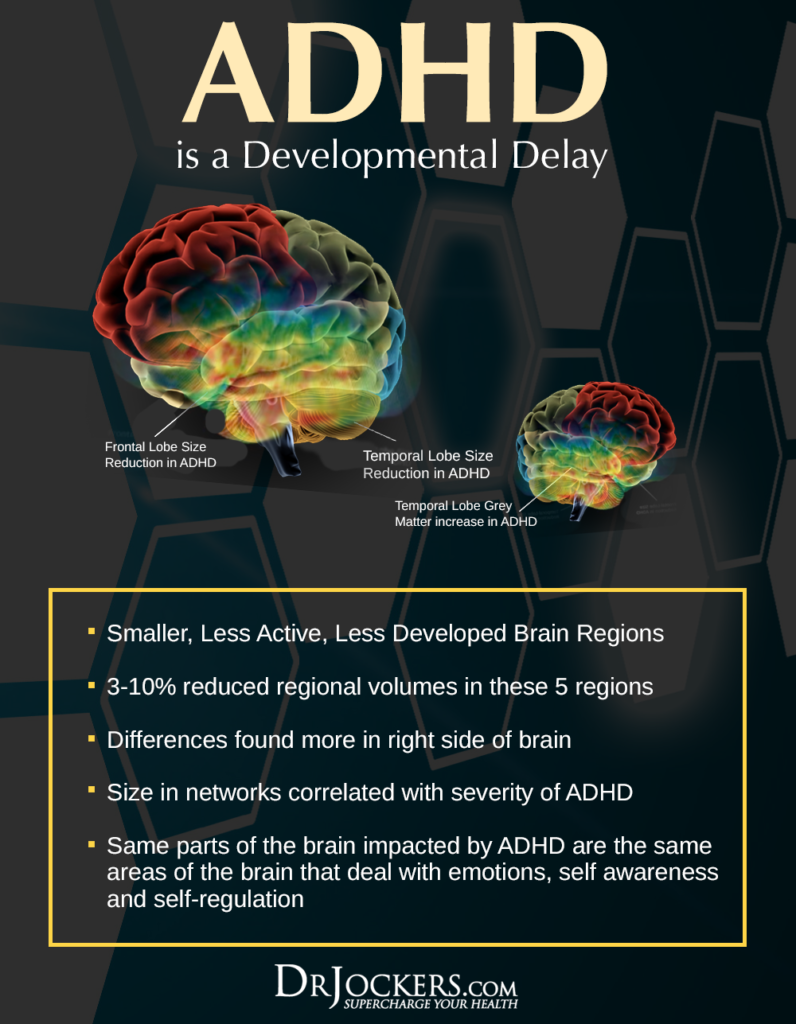
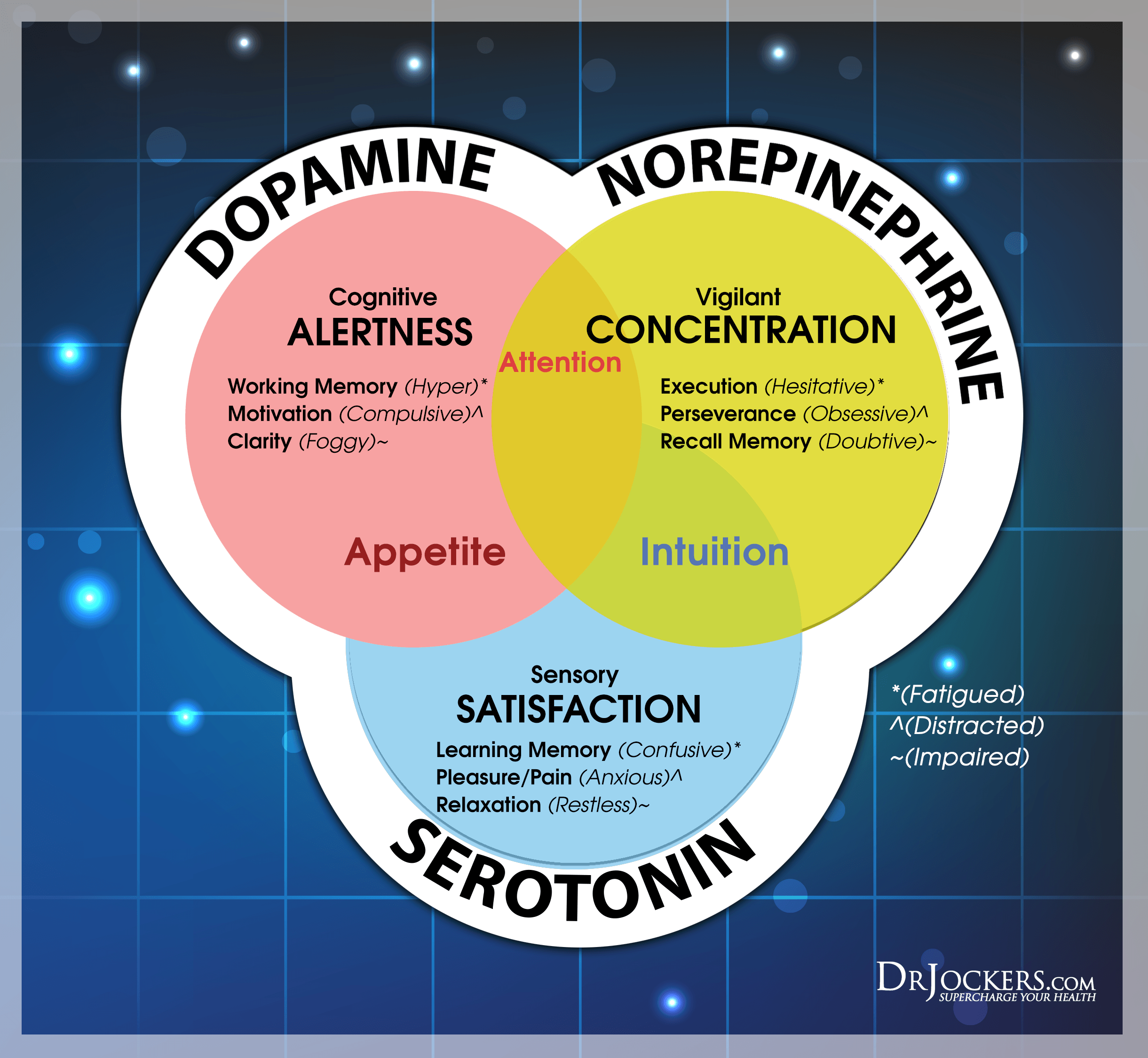

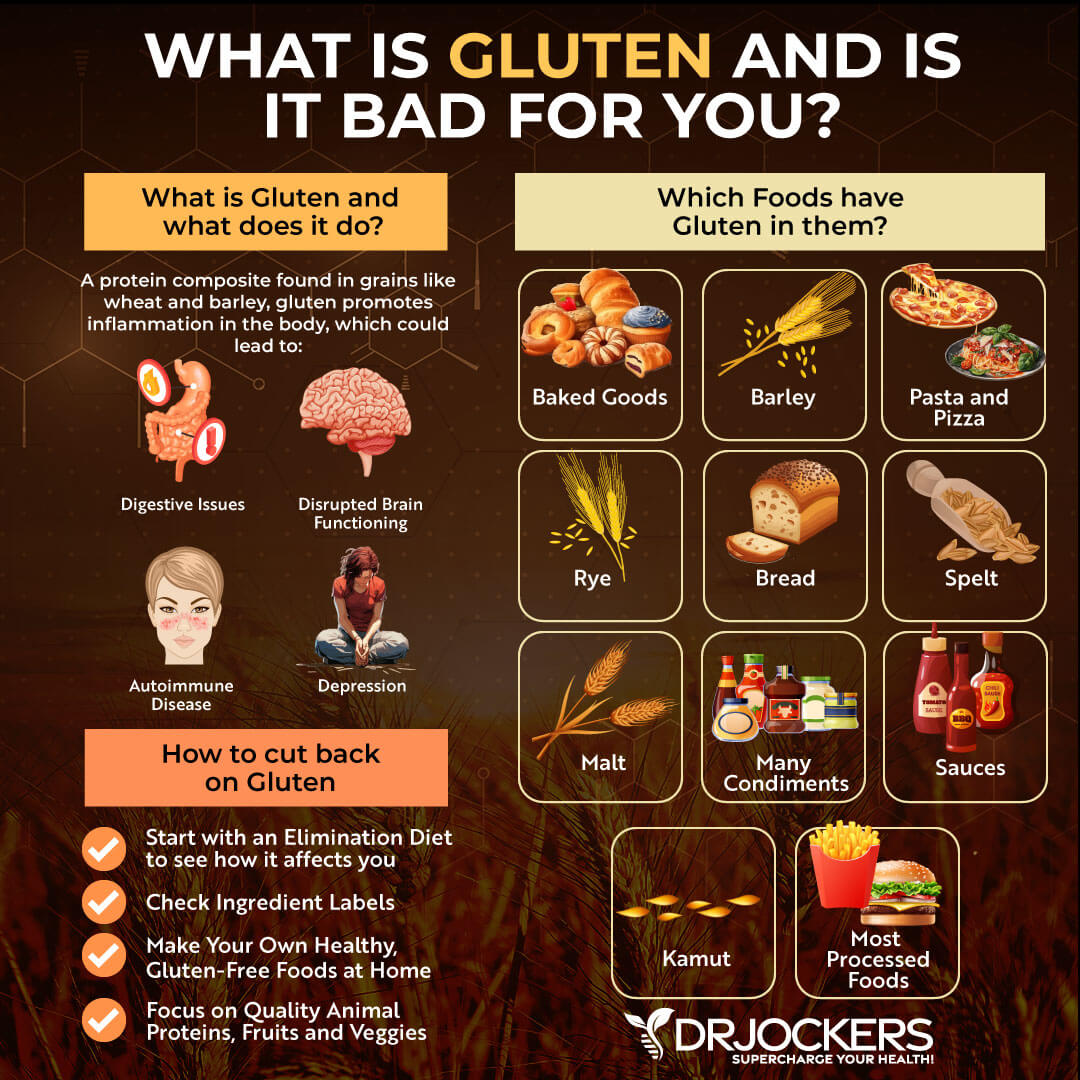
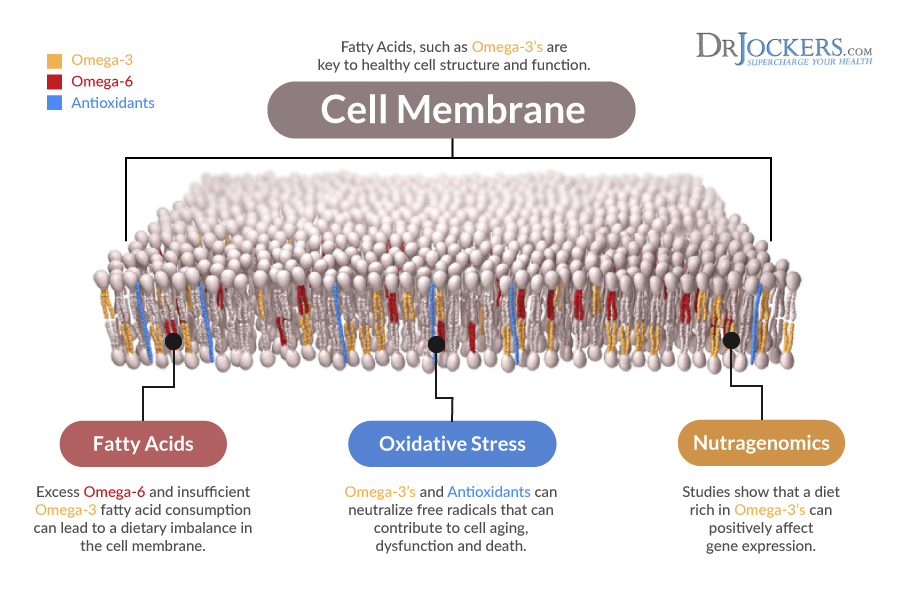





Hi I am a 49 year old adult with ADD I was diagnosed at age 7, you have some good information on this page and these supplement do help. You may want to take a look at this website http://www.phosadd.com concerning phosphates In are diet. Hertha Heffer a German scientist and researcher discovered 30 years ago the link between excess phosphates in are western diet and ADD her research was done with love as her son has ADD. I believe her finding are viable because I have tested a low phosphate diet on my self an it worked.
Cheers Michael
Thanks for writing Michael. That is a great recommendation. Dietary phosphates can be problematic!
Thank you so much for your knowledge! I used to wounder why kids always made fun of me and why I never felt I could measure up. I have been on a journey of health ever since learning how to get off my meds . my self using a book called Potatoes or prozac. it has been a wonderful but challenging journey. Your knowledge has been a very beneficial part of the journey! Thank you from the bottom of my heart!!!
Joyfully, Stenelle Brewer
Thank you Stenelle! Glad you are reading and using the info! Many Blessings!
What in the actual heck… This article is trash, in my opinion. While yes, a healthy eating plan and supplements are a great help for kids with ADHD, and extra amounts of certain vitamins and that jazz, the same can be said for all children. You can’t eat away ADHD. Some people are able to lose most of their troubling symptoms after reaching adult hood, while others don’t. Regardless of lifestyle. As someone who has
ADHD, who has had extensive counseling, medication adjustments, and someone who also has other medical problems, this article is another reason why every day I feel like my disorder is invalidated. Thanks for trying though, I suppose… Even if it’s not a fitting article for everyone.
Sorry to hear this! We have helped many people improve ADHD – both children and adults through the strategies in this article. Blessings to you!
Which foods are good for adhd?
I mention a lot of helpful strategies in this article, I would recommend starting with those.
As for diet, follow the strategies in this article:
https://drjockers.com/5-steps-to-following-an-elimination-diet/
Dr. Jockers,
Thanks for the informative article. Do you have any input about the Feingold Diet
( https://feingold.org/ )? A co-worker of mine testified that this diet did wonders for her son (light day and night transformation).
It can definitely improve hyperactivity related to certain types of gut issues!
Hi !! I have a son with ADHD . He is on medication, and I don’t want to keep giving it to him. Is it okay to give him the brain pack if he has been taking the medicine?
Yes Kameka! Blessings!